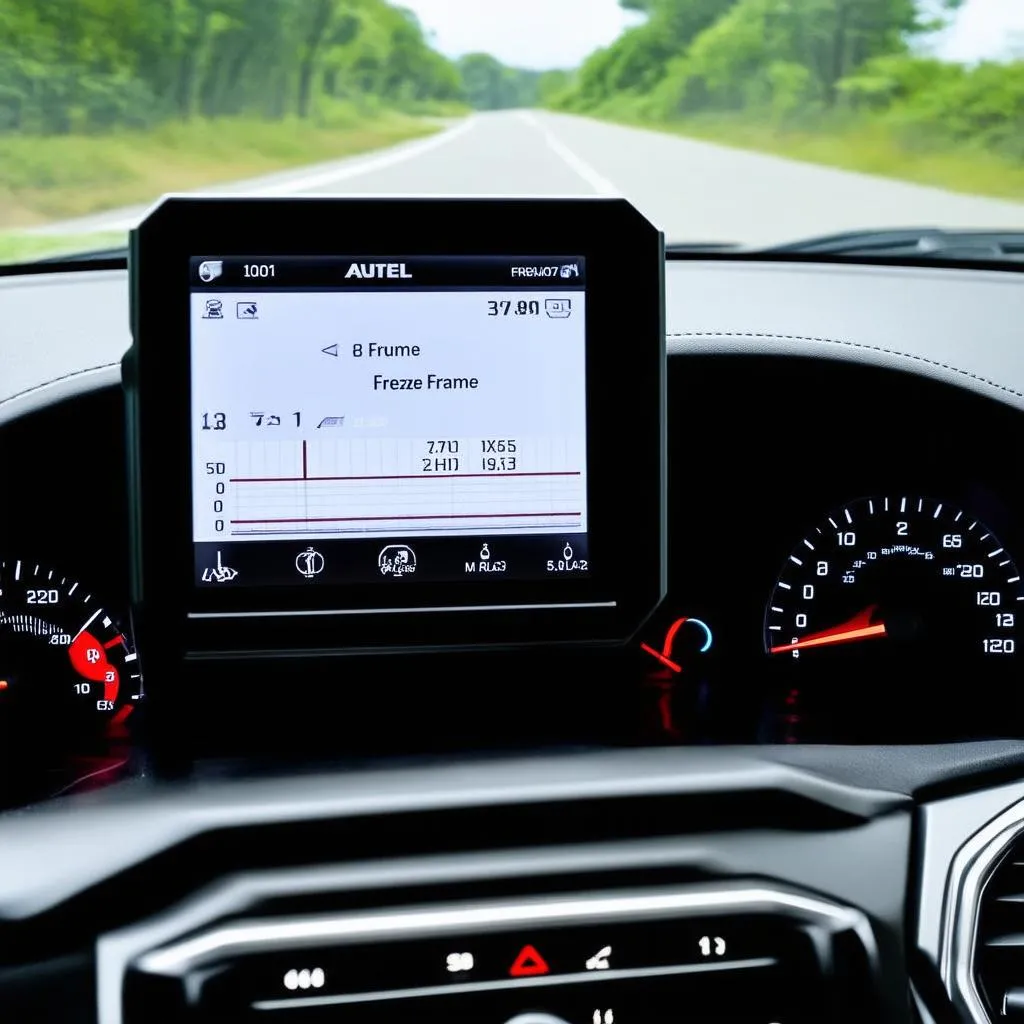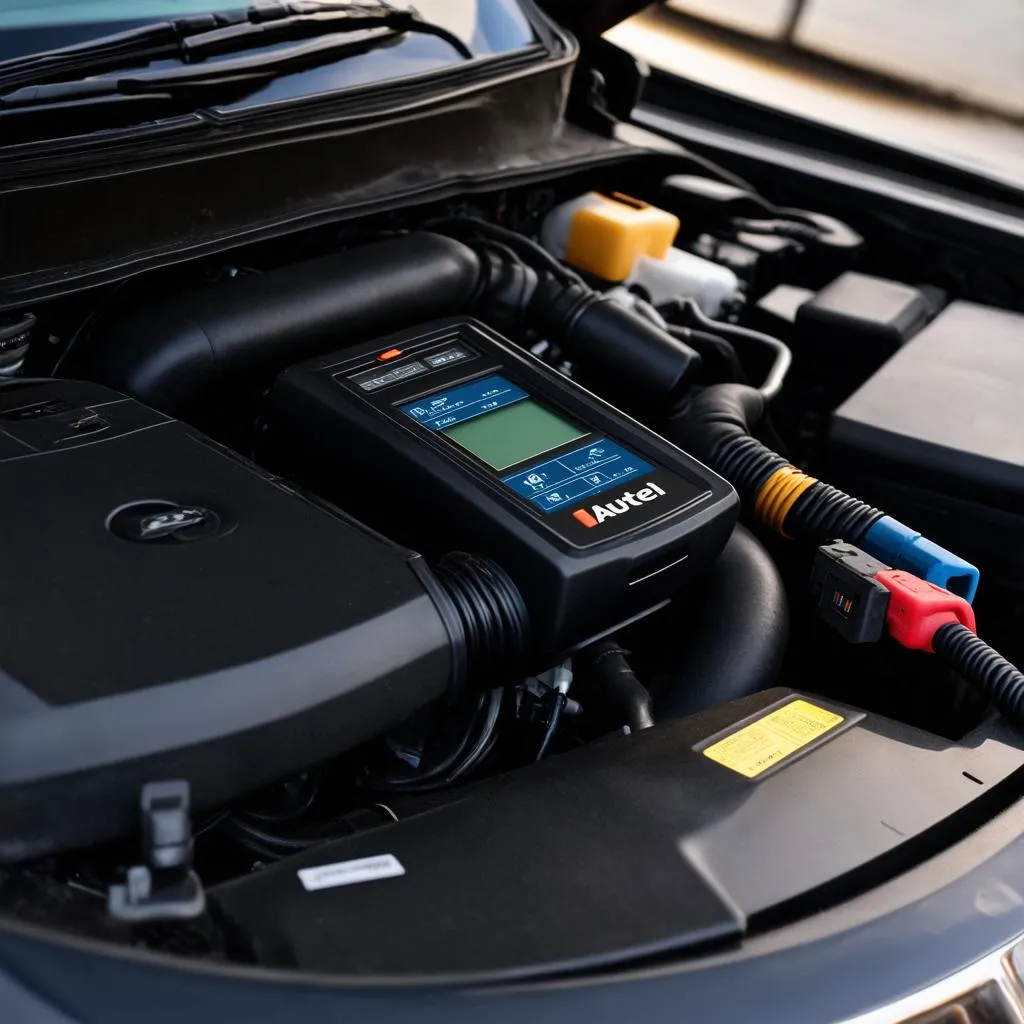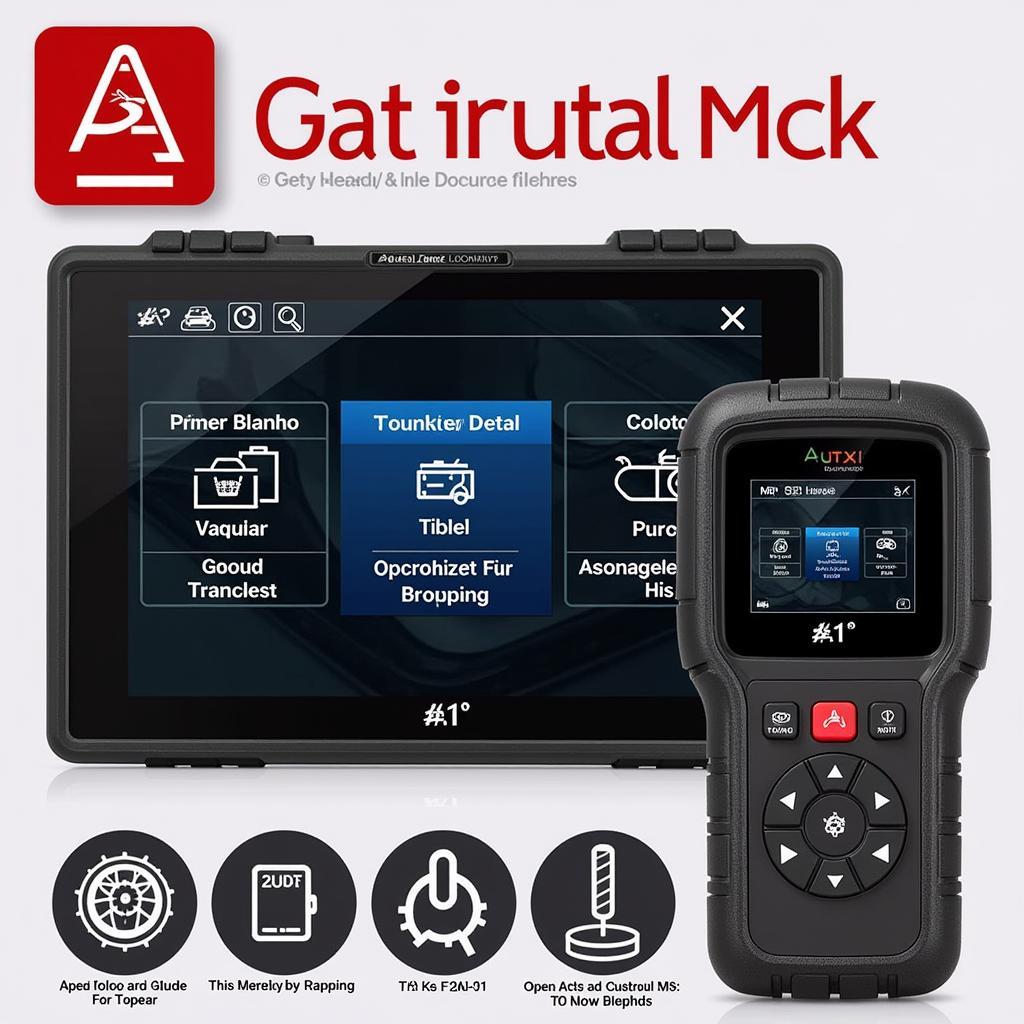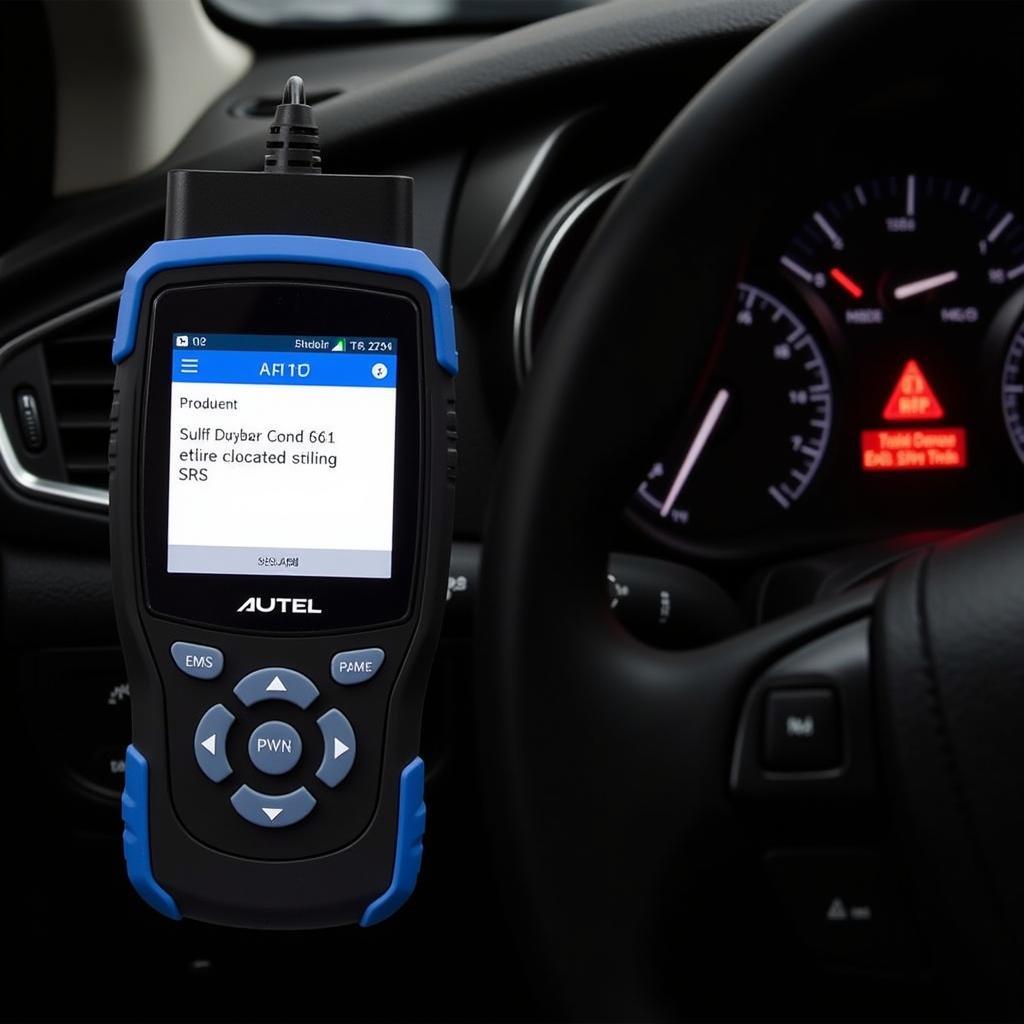Have you ever wondered what the freeze frame data in your Autel scanner is telling you? It’s like a little black box recording the car’s condition at the exact moment a trouble code is triggered. This valuable information can help you diagnose the problem faster and save time and money.
Understanding Freeze Frame Data: What is it and why it matters?
Imagine you’re driving down the highway, enjoying the open road, when suddenly your engine sputters and throws a check engine light. You pull over, feeling a mix of anxiety and curiosity. What happened? What could be causing this problem?
That’s where freeze frame data comes in. It’s like a snapshot of your car’s vital signs taken at the moment the issue arose. Think of it as a detective’s evidence, providing valuable clues about what went wrong.
Autel scanner freeze frame data gives you a comprehensive picture of the car’s status, including:
- Engine RPM: The speed of your engine at the time of the error.
- Vehicle Speed: How fast were you going?
- Engine Load: The amount of effort your engine was under.
- Coolant Temperature: The temperature of your engine’s coolant.
- Throttle Position: How much you were pressing the gas pedal.
- Air Flow: The amount of air entering your engine.
- Fuel System Status: Information about the fuel delivery system.
By analyzing this data, you can quickly identify the potential culprit behind the trouble code. For instance, if the freeze frame data reveals your vehicle was traveling at high speed when the code triggered, it might point towards a problem with your transmission.
How to Read Freeze Frame Data From Your Autel Scanner
The process is surprisingly straightforward:
- Connect your Autel scanner to your car’s OBDII port.
- Turn on the ignition (but don’t start the engine).
- Select the “Freeze Frame Data” option in your Autel scanner’s menu.
- Read the data values displayed on the screen.
Pro Tip: Refer to your Autel scanner’s user manual for specific instructions and definitions of the displayed data.
Decoding the Freeze Frame Data:
Now, let’s dive deeper into how to interpret the data you’ve collected.
Example: Let’s say your Autel scanner shows a code P0171 (System Too Lean (Bank 1)). You then access the freeze frame data and discover:
- Engine RPM: 2000 RPM
- Vehicle Speed: 45 MPH
- Engine Load: 50%
- Coolant Temperature: 180°F
- Throttle Position: 25%
- Air Flow: Low
- Fuel System Status: Open Loop
This data suggests that the engine was under a moderate load at a moderate speed when the code was triggered. The low air flow and the fuel system status in open loop indicate that the engine was not receiving enough air, leading to a lean fuel condition.
Frequently Asked Questions About Freeze Frame Data:
What are the benefits of using freeze frame data?
- Pinpoint the Cause: Freeze frame data provides crucial information about the conditions leading up to the trouble code, helping pinpoint the underlying issue.
- Speed up Diagnosis: It eliminates unnecessary testing and saves you time and money.
- Avoid unnecessary repairs: By accurately identifying the problem, you can avoid replacing parts that aren’t actually faulty.
How do I use freeze frame data with other diagnostic tools?
Freeze frame data can be combined with other diagnostic tools, such as live data readings and component tests, for a more comprehensive diagnosis.
Is there any specific advice for reading freeze frame data on European cars?
European cars often have more complex engine systems, so it’s important to consult a reputable resource or a qualified mechanic for interpreting the freeze frame data.
Can I use freeze frame data to diagnose electrical problems?
While freeze frame data primarily focuses on engine issues, it can also provide clues about electrical problems. For instance, if a code related to an electrical sensor is triggered, the freeze frame data might reveal unusual voltage readings.
What are some other common freeze frame data values and what do they mean?
- Fuel Trim: This value indicates how much the engine control unit (ECU) is adjusting the fuel mixture to maintain proper operation.
- Ignition Timing: This value shows the timing of the spark plugs, which is crucial for engine performance.
- Oxygen Sensor Readings: This data provides information about the oxygen levels in the exhaust stream, which helps gauge engine efficiency.
Beyond the Scanner: A Holistic Approach
You might be surprised to learn that even in the technical realm of car diagnostics, there’s room for a holistic perspective. Just like ancient Chinese medicine considers the interconnectedness of all aspects of the body, a comprehensive approach to car diagnosis encompasses not only the physical components but also the “energy” flowing through them.
For example: A low coolant temperature reading in the freeze frame data could indicate a problem with the thermostat, which is responsible for regulating engine temperature. However, it could also be linked to other factors, such as a blocked radiator or a malfunctioning cooling fan.
By considering the interconnectedness of these components, you can gain a deeper understanding of the issue and identify the root cause more effectively.
Take Action: Contact Us For Expert Assistance
If you’re struggling to interpret freeze frame data or need help diagnosing a car problem, don’t hesitate to contact us. We have a team of experienced automotive technicians who can provide expert assistance and guidance.
We offer:
- 24/7 Support: We’re always available to help you with any questions or concerns you may have.
- Personalized Solutions: We tailor our advice to your specific vehicle and situation.
- Trusted Expertise: Our team is comprised of certified technicians who stay up-to-date on the latest diagnostic techniques.
Connect with us on Whatsapp: +84767531508.
Explore More: Related Articles & Resources
- Autel DS808 Functions: Learn about the advanced features of the Autel DS808 scanner. [https://diagxcar.com/autel-ds808-functions/]
- Autel Autolink AL319 OBD2 CAN Bus Diagnosegerat: Discover the capabilities of this versatile OBD2 scanner. [https://diagxcar.com/autel-autolink-al319-obd2-can-bus-diagnosegerat/]
- Autel Maxicheck Pro Audi: Get a comprehensive overview of the Autel Maxicheck Pro scanner for Audi vehicles. [https://diagxcar.com/autel-maxicheck-pro-audi/]
Conclusion:
Freeze frame data is a powerful tool for diagnosing car problems. By understanding how to read and interpret this data, you can quickly pinpoint the cause of a trouble code and avoid unnecessary repairs. Don’t be afraid to embrace a holistic approach to car diagnostics, considering the interconnectedness of various components.
Remember, if you ever find yourself facing a car issue, our team of experts is here to assist you. Contact us today, and let’s work together to get your car back on the road!
 Autel Scanner Freeze Frame Data
Autel Scanner Freeze Frame Data
 Autel Scanner Mechanic
Autel Scanner Mechanic
 Autel Scanner Car Engine
Autel Scanner Car Engine


